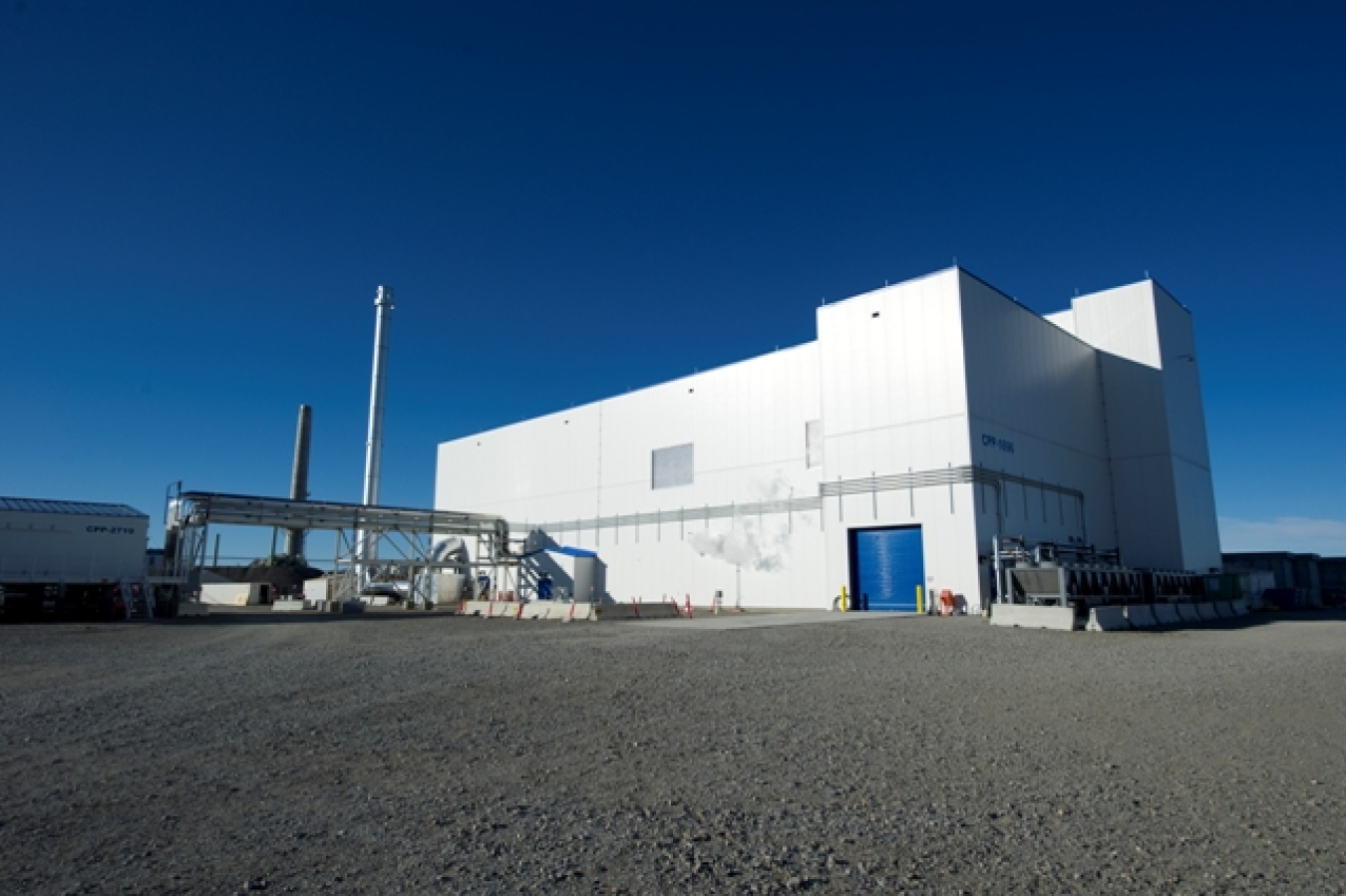
The Integrated Waste Treatment Unit at DOE's Idaho Site.
IDAHO FALLS, Idaho – Technical experts from around the country recently converged in Idaho Falls to aid DOE’s efforts to safely and effectively start up the Integrated Waste Treatment Unit (IWTU), intended to treat the approximately 900,000 gallons of remaining radioactive liquid tank waste at DOE’s Idaho Site.
Scientists and engineers from DOE-Idaho, DOE-Headquarters, the Idaho National Laboratory, Idaho Cleanup Project, the National Engineering Technology Laboratory, and Hazen Research met at a Fluidized Bed Workshop in mid-April to discuss the mechanical processes that take place within the IWTU’s Denitration Mineralization Reformer (DMR), a key reaction vessel in the facility. The IWTU uses steam-reforming technology to convert the liquid sodium-bearing waste to a granular solid, which is transferred to stainless steel canisters for safe storage and eventual disposal.
The gathered experts discussed the conditions observed inside the DMR during three prior waste simulant runs. During these runs, which used a non-radioactive chemical mixture with similar properties as the actual liquid waste stored in three underground tanks, operators and engineers noticed the formation of a bark-like material inside the DMR vessel walls. Not only did the bark-like material alter the ideal treatment conditions inside the treatment vessel, it also impacted the performance of the IWTU’s auger-grinder (reduces the granular solid size suitable for transfer to the stainless steel canisters) when the material shed from the vessel walls. Notably, though, the bark-like material found in the treatment vessel after the third simulant run was not as extensive and was easier to remove than similar material found after an earlier simulant campaign.
The workshop participants discussed what process operating conditions could be contributing to the bark-like formation inside the DMR vessel. At a second Fluidized Bed Workshop scheduled to be held this week in Idaho Falls, scientists and engineers will discuss what might be the ideal fluidized bed process conditions in terms of vessel temperature, ideal amount of alumina to keep inside the vessel, and the flow rate of the liquid waste into the alumina media. Proposed changes will likely be incorporated into the next waste simulant run.
During the winter, DOE convened a Chemistry Summit of scientific experts to examine the chemical processes that take place inside the DMR during simulant treatment. The group identified potential equipment and process modifications to address the chemistry and fluidization issues. Some of these solutions can be implemented in the near term, while others will require additional testing. The near-term path forward is to implement some of the team’s recommendations during the next planned simulant run.
In the first three simulant runs, IWTU processed about 90,000 gallons, which is equivalent to about one-tenth the amount of sodium-bearing waste in the tank farm. The simulant runs have provided valuable plant operating data that will be evaluated as part of the DOE’s decision to proceed to hot operation of the facility. DOE is taking a deliberative approach to identify and resolve any technical issues that could negatively impact the facility and to ensure safe and reliable radioactive waste treatment operations at IWTU.
DOE is working to meet an agreement with the state of Idaho to begin actual waste processing at IWTU by Sept. 30, 2016. The Department will only begin operations at the IWTU, however, when it is safe to do so.
